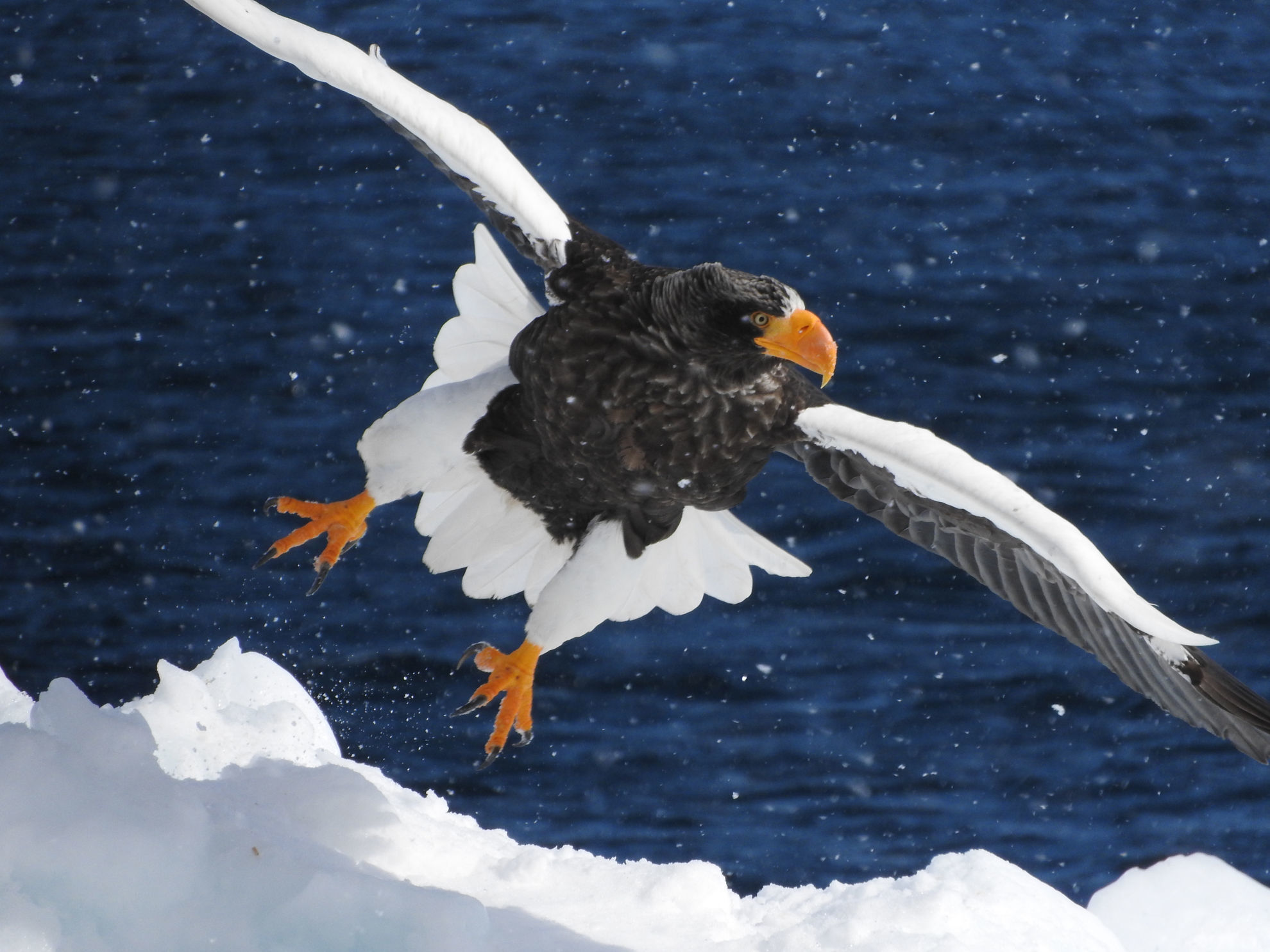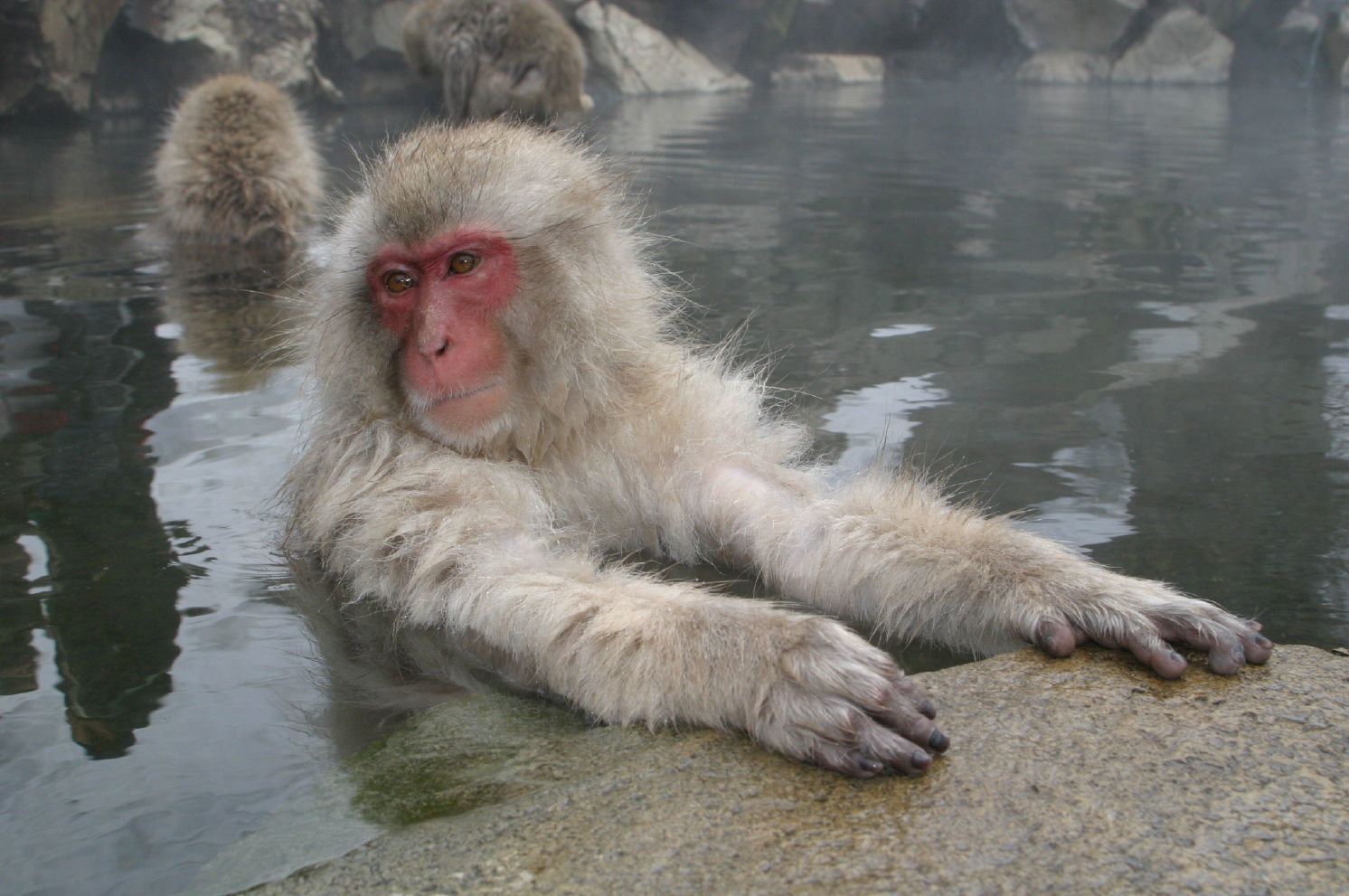Toll Free: 800.328.8368
Phone: 512.328.5221
Japan in Winter
Upcoming Dates
January 13 - 30, 2026
Departs
Tokyo
Returns
Tokyo
Tour Limit
Sold Out
Itinerary
Read More
Steller's Sea-Eagle © Mark Brazil
Japan is renowned for mouth-watering winter birding. It hosts spectacular gatherings of majestic cranes and awe-inspiring sea-eagles, while the supporting cast includes a diverse range of East Asian and Japanese specialty birds, including the enormous Blakiston’s Fish-Owl, and several mammals including the famous Japanese Macaques known as Snow Monkeys. We will explore an array of beautiful natural settings on an exciting birding adventure and have numerous incidental experiences as we travel through this culturally distinctive country. Our guides are Mark Brazil—the leader who helped put birding in Japan on the international map—and his wife, Mayumi.
Our winter birding tour visits three of Japan’s main islands: Kyushu, Honshu, and Hokkaido. Beginning in Honshu, we visit wetlands, marshes, and lakes in the Tokyo area in search of common woodland edge species along with wintering waterfowl including geese, swans, and ducks that may include Baikal Teal, Smew, and Falcated Duck, along with raptors and thrushes, all before we head south to Kyushu.
In Kyushu, we will marvel at the amazing sight and sound of over 15,000 Hooded and White-naped cranes. Among their flocks, which gather in the coastal habitats of southwest Kyushu and in nearby areas, we will search for scarce winter visitors including Common and Sandhill cranes. Very occasionally, even a Demoiselle or Siberian crane puts in an appearance.
We will also seek out woodland species including such endemic, near-endemic, and regionally special species as Japanese Woodpecker, Japanese Pygmy Woodpecker, Ryukyu Minivet, Brown-eared Bulbul, Varied Tit, Elegant Bunting, and the scarce Gray Bunting.
Turning northwards, we will visit the Ramsar-registered wetlands of Kyushu’s Ariake Inland Sea on our way to the Sea of Japan coast of Honshu. There we will look for Eurasian and Black-faced spoonbills, and Saunders’s Gull, Mandarin Duck, and an array of wintering shorebirds that may include Eurasian Curlew and Common Greenshank, Pied Avocet, Red-necked Stint, and many more. Thereafter in coastal Honshu we visit wetland and woodland sites on our way inland towards the Japan Alps. There we pay a visit to the fabled, photogenic Snow Monkeys at their thermal pool. If we are lucky, we may even spot an endemic Japanese Serow in the area, too.
In the foothills of the Japan Alps, our forest, river, and pond birding offer local specialties such as Japanese Tit, Japanese Wagtail, Long-tailed Rosefinch, Long-billed Plover, and Brown Dipper, with exciting possibilities that may include Smew, Falcated Duck, Mountain Hawk-Eagle, Crested Kingfisher, and Red-flanked Bluetail.
Finally, we head to Japan’s northern island of Hokkaido. There, in the wilds of eastern Hokkaido, we will experience the austere allure of this almost sub-Arctic region. The cold, white beauty of the almost Siberian vistas here is complemented by two stunning species: Red-crowned Crane and Steller’s Sea-Eagle. We will visit sites where Red-crowned Cranes gather to forage and display, forming or rekindling their pair bonds, in delightful graceful posturing and dancing, and incidentally providing outstanding photographic opportunities. From near extinction a century ago, their population has recovered to around 2,000 individuals, giving us plentiful opportunities to encounter them. We will also visit the Shiretoko Peninsula National Park and the Nemuro Channel, where both Steller’s and White-tailed eagles gather along with various wintering gull species, particularly Slaty-backed Gull and Glaucous Gull. The Sea of Okhotsk endemic Steller’s Sea-Eagle greatly outnumbers the more widespread White-tailed Eagle here in winter, making for a very exciting experience.
Weather-permitting, we will explore offshore by boat to appreciate the richness of the raptors and seabirds offshore, or seek them from headlands and viewpoints with the likelihood of such additional species as Long-tailed Duck, Black Scoter, Stejneger’s Scoter, Harlequin Duck, Japanese Cormorant, Spectacled Guillemot, and Ancient Murrelet, and perhaps even something rarer.
Lowland forest in east Hokkaido is enticing too, as it is home to several woodpecker species, including White-backed, the beautiful gray-breasted race of the Eurasian Bullfinch, and the delightful white-headed race of Long-tailed Tit—known locally as the “snow fairy.”
Our final nights in Hokkaido will be spent at a restful Japanese inn nestled in woodland beside a rushing river—the habitat of a pair of Blakiston’s Fish-Owls. With only about 100 breeding pairs in Hokkaido, this is one of the world’s largest and rarest owls. We will have two nights and good chances of seeing this impressive bird. The river here is home to Brown Dipper and Crested Kingfisher, and in some winters Solitary Snipe, too.
We stay at various pleasant hotels with several nights in restful, traditional inns; Mark and Mayumi are always on hand to explain the incidental culture and the excellent Japanese cuisine; generally easy, with non-strenuous walking, plus some walking on snowy trails; expect cool to cold weather.

Japanese Macaque (also known as Snow Monkey) © Mark Brazil
Price: $14,325
(Internal flights included)
This departure is sold out. Please contact the VENT office to register for the waitlist.
Departure Dates
Route Map
Tour Leaders
Field Reports
Available by request; please contact the VENT office.
Connecting Tours
No Connecting Tours
Operations Manager

Penny
Saydah
Questions? Contact the Operations Manager or call 800.328.8368 or 512.328.5221




